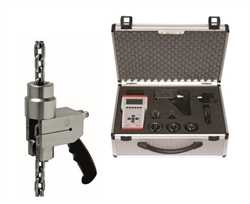Details
Strain gauge amplifiers are used to transform the mV/V output-signals of strain gauges in amplified signals with a higher fault resistance. By the use of an amplifier it is also possible to connect sensors to displays and controlling units with the need for an amplified signal. The model EZE11 series are designed for nearly static applications for example weighing. The user friendly product comes with big screw type terminals for hat rail mounting and status-LED-display.
Features
- Strain gauge amplifier for mounting on top hat rails
- Outputsignal 0/4...20mA and 0...10V (3-Wire)
- Accuracy 0,01% of full scale
- Limit frequency up to 33 kHz for static applications
- Up to 4 strain gauges with 350 ohm parallel connectable
- Supports 6-wire systems
- Needed power supply 12-24 VDC
- integrated cable break controll and error indication (switch)
- User friendly because of big screw type terminals and status LED display
- Micro-switch to adjust zero point, span and filter
- Protection Class IP 40
Application
In combination with force transducers or load cells the amplifier EZE11 can be used for force measuring or industrial weighing. It is possible to connect all kind of strain gauges to the amplifier (up to 4 sensors with a resistance of 350 ohm parallel connectable) with an output signal up to 3,5 mV/V. The internal sensor supply is 10 VDC. Usually the amplifier is not pre-adjusted and the customer connects it to the force transducer and also adjusts it. Because of the 3-wire analogue output of 0/4..20mA or 0...10 V and the needed supply energy for the amplifier between 12 and 24 V it is possbile to connect the model EZE11 series directly to PLC. Those normaly come with matching analogue inputs which offer a supply energy of 24 V. A micro switch allows to adjust zero point, span and filtering. Interfering signals can be damped by a low-pass filter. The amplifier contains also a logical output as safety device. This output is normaly closed, in case that an error occurs (for example a short-circuit at the supply-, sensor or signal wire of the load cell, exceeding of the max. output signal or problems in the power supply) the output opens.















